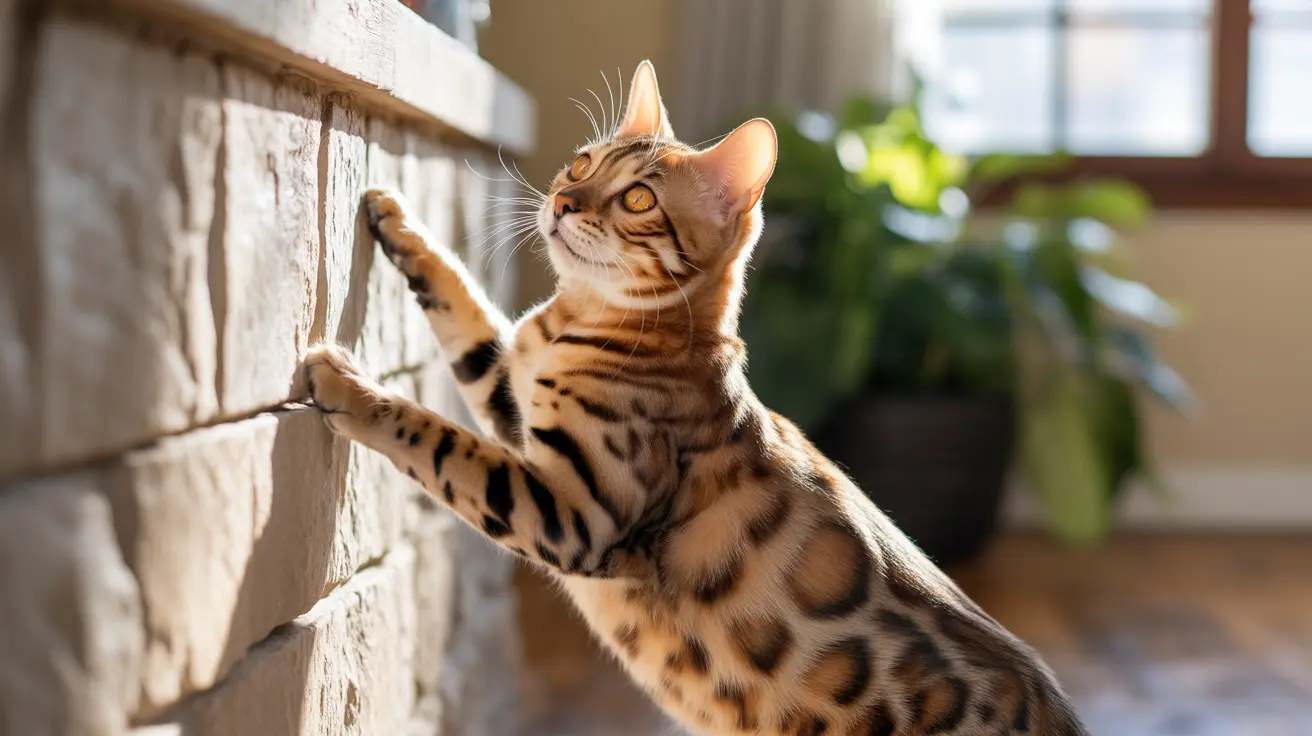The Natural Climbing Instinct: Why Cats Love Heights
Cats are natural-born climbers, with an evolutionary history that's shaped their bodies and behaviors for vertical exploration. In the wild, their ancestors used climbing abilities to hunt prey, escape predators, and survey their territory from safe vantage points.
Modern domestic cats retain these instincts, which explain their fascination with heights and vertical surfaces. Even well-fed indoor cats demonstrate this hardwired behavior, seeking elevated positions that offer both security and entertainment.
Physical Adaptations That Enable Wall Climbing
Specialized Anatomy
Cats possess several physical adaptations that make them excellent climbers:
- Retractable claws that provide grip
- Powerful hind legs for jumping
- Flexible spine and shoulders for agile movement
- Excellent balance and spatial awareness
- Strong, muscular bodies relative to their size
Grip and Surface Requirements
While cats are skilled climbers, they do have limitations. They need surfaces that provide adequate grip for their claws, such as:
- Textured wallpaper
- Carpeted surfaces
- Rough wood
- Fabric-covered furniture
- Specially designed climbing walls
Creating Safe Climbing Spaces for Your Cat
Rather than trying to prevent climbing behavior, it's better to provide appropriate climbing opportunities that satisfy your cat's natural instincts while protecting your walls and furniture.
Recommended Solutions
Consider installing:
- Cat trees with multiple levels
- Wall-mounted cat shelves and perches
- Climbing posts with varied textures
- Window perches for outdoor viewing
- Dedicated cat climbing walls
Health Benefits of Vertical Activity
Encouraging appropriate climbing behavior offers numerous benefits for your cat:
- Physical exercise and weight management
- Mental stimulation and enrichment
- Stress relief and anxiety reduction
- Territory marking opportunities
- Natural behavior expression
Managing Unwanted Climbing Behavior
If your cat is attempting to climb inappropriate surfaces, it's usually a sign they need more suitable climbing options. Address this by:
- Providing multiple climbing alternatives
- Creating engaging vertical spaces
- Maintaining consistent play sessions
- Using deterrent sprays on off-limits areas
- Ensuring adequate environmental enrichment
Frequently Asked Questions
Can cats actually climb smooth walls, or do they need textured surfaces to grip?
Cats cannot climb completely smooth walls like glass or polished metal. They need textured surfaces that their claws can grip. While they might attempt to climb smooth walls, they'll be unsuccessful without something to hold onto.
How can I safely install cat wall furniture to support my cat's climbing without risking injury?
Always mount cat furniture into wall studs using appropriate hardware. Space climbing elements at comfortable jumping distances for your cat's ability level, and ensure all platforms can support their weight plus additional force from jumping.
Why do cats climb walls and high places indoors, and how can this behavior benefit their health?
Cats climb for security, territory surveillance, exercise, and mental stimulation. This natural behavior helps maintain muscle strength, flexibility, and mental well-being while reducing stress and anxiety.
What materials and designs work best for creating effective and safe climbing walls for cats?
The best materials include sturdy wood, sisal rope, carpet, and other grippy textures. Designs should include various levels, secure mounting points, and comfortable landing areas. Avoid slippery materials or unstable structures.
How can I stop my cat from climbing on furniture or walls where it's not allowed while still satisfying their climbing instincts?
Provide alternative climbing spaces specifically designed for cats, use deterrent sprays on forbidden areas, and reward your cat for using appropriate climbing spaces. Ensure they have enough vertical territory to satisfy their natural climbing needs.






